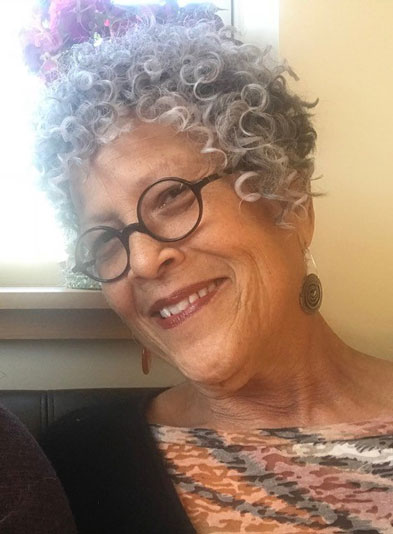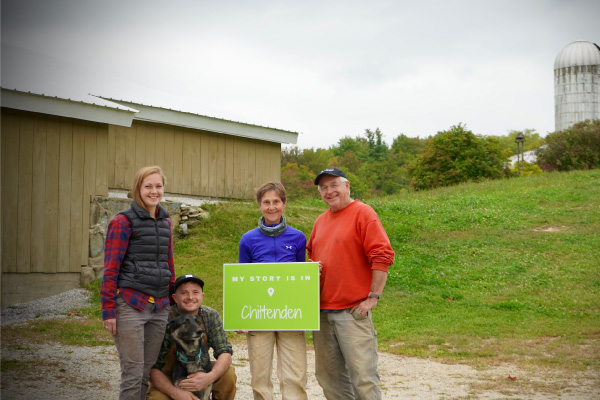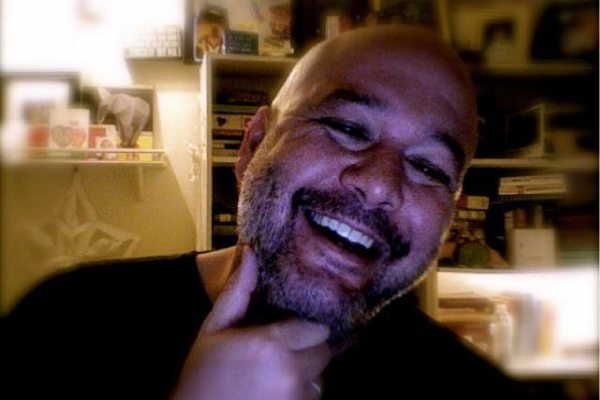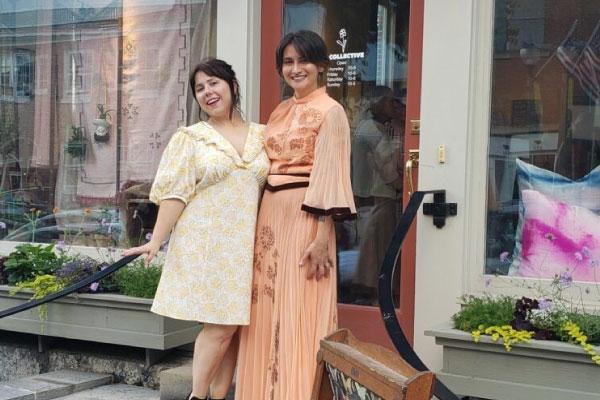
by accdWebMaster | Oct 18, 2021 | Creative Economy, Diversity
The idea for A2VT was sparked when Said Bulle “Jilib” and George Mnyonge “MG Man” met on a Burlington soccer field. It was there they discovered their shared love of music and shared refugee roots. A decade later, A2VT has just released a new single, Faas Waa, and has been touring throughout Vermont and New England.
We spoke with Jilib and MG Man about what it is like to be artists in Vermont.
How has living and making music in Vermont affected your creative process?
Living in Vermont, with its four unique seasons helps us to set time aside, especially in winter, to develop our songwriting and recording. If we lived in a place like Florida or California, our lifestyle would be completely different and we might not have enough time to do all the things important to us. Vermont is quiet and has less people living in it, allowing us more time to focus on our creativity. Our music has evolved to be more dance oriented, more Afropop and Dancehall (Jamaican) influenced. When we first started making music almost ten years ago, it was more a hybrid of African, World, and Western music. The tempos have become faster as well.
What is your vision for the next several years?
We want to get our new album out and start the next one. We’d like to tour the country and the world, sharing our story of where we come from with new friends from everywhere. Also, make more videos and become homeowners at some point. We wanna’ be the next Phish, but African style!
visit A2VT’s website
read an interview with PRI
watch a video of the new single Faas Waa
The “I am a Vermont Artist” series explores how artists’ creative expressions reflect their experiences of ethnicity, gender identity, religion, disability, or age. Covering all artistic disciplines, and a range of backgrounds—from New Americans to the state’s first residents—we hope to amplify voices that deepen our understanding of what it means to be a Vermont artist. This story by the Vermont Arts Council originally appeared at https://www.vermontartscouncil.org/blog/i-am-a-vermont-artist-a2vt/

by accdWebMaster | Oct 11, 2021 | Creative Economy
“Making/creating is a link to a deep remembering of who we are,” writes Kaylynn Sullivan TwoTrees. Over more than five decades, TwoTrees has explored the connections between nature and self through a number of media. Her work has been exhibited and is in collections in the U.S., Europe, and New Zealand, and she is a past recipient of the Lila Wallace International Artist Award.
TwoTrees shared her thoughts about being a Vermont artist.
How has living as an artist in Vermont affected your creative process?
Moving to Vermont from the New Mexico high desert affected my process in multiple ways. My relationship to landscape and nature had always been primary and intimate and here in Vermont the starkness of the seasons re-tuned me in a different way. I turned more inward during the winter and had creative bursts rather than the subtle long and slow unfolding of my process in the seasons of the desert. I also moved between mediums more frequently—from artist books to installations to sculpture and writing—trying to stay resonant with landscape and seasonal energy. As a conceptual artist this change has given me a chance to engage with different audiences and learn from that interaction.
What is something about your art that has changed over time?
I have been creating and exhibiting work for over fifty years and have been fascinated by large scale conceptual work–mostly installation/performance. As I have moved around the world and aged I have begun experimenting with smaller scale, both in presentation and in ideas. I find that change in landscape and in physical ability have given me new avenues and mediums to explore. I am also returning to more collaborative work, which offers greater range of expression when there is deep resonance between the artists. I am continually searching for new ways to make connections to people and to consciousness. In my work I am seeking ways to pose questions that invite/provoke the viewer to remember/dream a more hospitable world for all living beings.
What is your vision for the next several years?
At the moment I am working to shift my focus to video in order to engage multiple generations of viewers and a larger audience. It means using my studio work to create some of the material for video. I am currently working on a collaboration with musicians to create a visual narrative interpretation of my paintings as a video. I see video as a way for me to engage in collaborations with other artists and one that will stretch my creative vision and our ability to engage the viewer in ways I do not yet know.
View TwoTrees’ Gallery.
Explore TwoTrees’ writing.
Watch videos by TwoTrees.
The “I am a Vermont Artist” series explores how artists’ creative expressions reflect their experiences of ethnicity, gender identity, religion, disability, or age. Covering all artistic disciplines, and a range of backgrounds—from New Americans to the state’s first residents—we hope to amplify voices that deepen our understanding of what it means to be a Vermont artist. This story by the Vermont Arts Council originally appeared at https://www.vermontartscouncil.org/blog/i-am-a-vermont-artist-kaylynn-sullivan-twotrees/

by accdWebMaster | Sep 30, 2021 | Relocation, Relocation Incentives, Southwestern Vermont
Rutland County, Vermont is the perfect place to put down roots for young and seasoned professionals alike. Throughout the region, countless professional career opportunities are filling job boards, amazing year-round outdoor recreation activities are just steps from our backyards, and the ability to get involved in the community is seamless. With these opportunities present across the region, the Regional Marketing Initiative – known as Real Rutland – was born to attract and recruit both individuals and families to consider a move to the Green Mountains that we get to call home.
Real Rutland lives under Chamber & Economic Development of the Rutland Region (CEDRR). Funding for the initiative comes from a diverse population of municipalities, businesses, and individuals who feel increasing the Rutland County population is a priority. The staff at CEDRR, along with various partners, work diligently to highlight the amazing lifestyle available throughout Vermont.
As part of Real Rutland, our region offers a complimentary Concierge Program. The Concierge Program is comprised of over thirty very active volunteers who are passionate about Rutland County and always love meeting new people. These volunteers are young professionals, families, small business owners, life-long Vermonters, and new residents. They are available to provide insights and perspectives of what life in Rutland County looks like first-hand. In addition to these perspectives, our volunteers are more than willing to answer questions, make additional introductions both personally and professionally, and go out of their way to make Vermont feel like home. We have heard from many of our new residents who participated in the Concierge Program that one of the most beneficial parts of the program was to build a network of friends before they even arrived.
Jenna from Chittenden, Vermont has been active in our community for many years, including volunteering with our Concierge Program.
“Even though Chittenden is the largest town in the state of Vermont by area, it still has a small-town feel. We love the town because of its small tight-knit community, the access to untouched National Forest, and the water of the Chittenden Reservoir. Barstow, located in town, is a great K – 8 school and the center of a lot of the town’s charm. Whether cross-country skiing in the winter or putting the kayaks on the pristine water in the summer, Chittenden is a gateway to living a vibrant outdoor lifestyle.”
-Jenna
One resident who has moved here in the last few years was eager to share his appreciation for how quickly he became part of our community.
“We found everything we wanted here: good jobs, spectacular scenery and recreation, affordable land and housing, and a sense of community we’d only dreamed about. We can’t wait to help welcome more people to this great region.”
– Tom
Most recently, Real Rutland launched a new Relocation Incentive Package to attract new potential residents to the area. The incentive program was made available for 30 families on a first-come-first-served basis and is valued at over $2,000 per package. The application process is currently available through December 1, 2021, or while prizes and incentives last. To be eligible, you must relocate to Rutland County, Vermont within 6-months of entering the program.
The Real Rutland Relocation Incentive Package consists of a variety of offerings that were generously donated by local businesses. These incentives will allow new residents to participate in some of the attractions favored by our locals. This is Vermont’s outdoor lifestyle at its finest.
ELIGIBLE PARTICIPANTS WILL RECEIVE:
- 2 lift tickets to Killington Resort ($330 value.)
- 2 round trip tickets from Rutland to Boston via Cape Air ($179 value.)
- 3 months free at the MINT Makerspace ($150 value.)
- 3 months free rent if the person signs a year-long lease on a co-working/office space ($1,200 value.)
- Gift certificate to a CEDRR member restaurant ($100 value.)
- 2 tickets to the Paramount Theatre ($95 value.)
- Waived initiation fee on membership and a free Personal Training Session or Tennis Lesson at Vermont Sport & Fitness ($100 value.)
- One free month Membership with the purchase of One Month Membership, includes in-person classes and all online classes, at the Gymnasium ($58 value.)
Anyone looking to learn more or enter the Real Rutland Relocation Incentive Package should visit https://realrutland.com/relocate/.
Our Real Rutland website offers a wide variety of resources to individuals and families considering a move to our region and we encourage those interested to visit our website to learn more at https://realrutland.com.
LINKS & SOCIAL
Website: www.realrutland.com
Facebook: www.facebook.com/therealrutland/
Instagram: https://www.instagram.com/therealrutland/
Hashtag: #REALRUTLAND
Kim Rupe is the Communications and Community Engagement Director for Chamber & Economic Development of the Rutland Region and lives in Poultney.

by accdWebMaster | Sep 29, 2021 | Creative Economy
Posted By: Desmond Peeples | Photo: Jody Fried, executive director of Catamount Arts. [Photo Courtesy Vermont Arts Council]
Leaders of arts and cultural organizations must draw on perhaps until now untested courage and fortitude to navigate today’s choppy seas. A viral pandemic, economic devastation, unending climate crises, and mass demonstrations to end systemic racism—all are reshaping the cultural landscape. How will these factors shape the arts now and in the future?
As part of a series featuring Vermont’s arts and cultural leaders, we’re asking how they are navigating these peculiar times. We hope that the responses might help other arts and cultural organizations chart their own voyage.
YOUR NAME and TITLE: Jody Fried, Executive Director
YOUR ORGANIZATION: Catamount Arts
YEAR YOU JOINED ORGANIZATION: 2008
What makes you hopeful for the future?
There’s an increased awareness of the importance of arts, culture and creativity to the health and well-being of our communities and economy. We’ve all learned a lot of difficult lessons recently, but one resource all sectors of the community have drawn on is arts and culture, right? All over the world, people spent quarantine watching Netflix, doing TikTok dance challenges, and playing music on porches and fire escapes. ‘
The Catamount Arts community partnered with health and social service agencies to provide art supplies and project prompts to isolated people; we invited quarantined families to make movies together in our first international film slam; we celebrated New Year’s Eve online with 8 hours of entertainment; we converted empty storefronts to art galleries; we repurposed a mall to make indoor performance safer and we brought outdoor performances to downtown sidewalks.
These strategies required some innovative and unusual partnerships, but these alliances allowed us to demonstrate over and over again that art is a necessary community infrastructure. Right here in the Kingdom, we saw arts safely entertain families and community, but we also saw arts diminish isolation, support mental health, provide jobs, promote downtown businesses, and foster compassion. Now that art is gaining rightful recognition as a vital community resource, I’m hopeful we can keep finding innovative ways to make sure it’s available to everyone, always.
What’s the most challenging part of your work currently?
Managing long-term ambiguity requires exponentially more work and mental resources. Constantly building multiple contingencies for factors out of our control is exhausting. We’re seeing this everywhere of course, with teachers, health care workers, parents, and small business owners. Everyone is doing their best to manage unprecedented and unpredictable circumstances, and everyone is tired from operating at surge capacity for nearly two years.
But I’m not talking only about COVID. The arts and culture industry operates in constant financial uncertainty. There are no big bailouts here. If you think about the creative people in our communities, the artists and arts educators, the people running theaters and galleries, doing amazing things like the Dog Chapel at Dog Mountain and Juniper Creative’s public murals and Modern Times Theater’s off-road performance buggy and the Clemmons Family Farm’s online remote learning platform and JAG’s Theatre on the Hill, you begin to appreciate what might be possible, what potential could really be tapped, if these industries weren’t working so hard just to keep the lights on.
But then look at how these creatives adapted and are still adapting to COVID: moving programming outside for three seasons, adapting classes and workshops for online learners, engaging communities safely and joyfully. I hope the work they are doing is sustainable and appreciated and that we can support these vitally important community leaders so they can continue to serve.
How have you changed as a leader in the last six months?
I’m more grounded than ever in my commitment to collaborative innovation and my love of this place we call home. Watching the Catamount Arts team this past 18 months or so has been nothing short of inspirational. While working from home with increased distractions, raising families, handling the myriad mental and physical health challenges of COVID, their steadfast dedication to creating and implementing safer program strategies; identifying and engaging isolated audiences; adapting to evolving safety guidelines again and again, it’s all been heroic.
And it’s beyond Catamount of course. Every sector of our community has reached out and partnered together in smart, innovative ways to link needs to resources. What we call the “Catamount” community extends far beyond our team of staff and volunteers and artists and patrons; it’s area educators, parents, business owners, farmers, healthcare workers, social service agencies.
One thing about a global pandemic is that global leadership isn’t really a thing; no one’s in charge, there’s no one to look to tell us what to do. And as COVID has affected different communities in dramatically different ways, community leadership has really been put in the hot seat. I’ve been so grateful to be part of a community where leadership reacts first and foremost to need: what does our community need, and how can we mine our collective resources to provide it? Collaboration, communication, and compassion, no matter what sector you’re coming from, will guide effective service to your community.
What are you prioritizing?
We need to ensure program continuity by building systems adaptable to COVID-19. In other words, hope for sun, but prepare for rain. We can’t wait for COVID-19 to be eradicated; we need to figure out how to work around it. We need updated, reliable air exchange systems, versatile indoor performance spaces, clear safety protocols, innovative programming strategies, and we need flexible mindsets and clever partnerships. Fortunately, we’ve been developing all of these resources, experimenting with pod seating, vertical concerts, drive-in performances, and of course ubiquitous online programming. At this point, adaptation is not new. We’re good at it now, and with tried-and-true collaborations across all sectors, we’re only getting better.
How do you see your relationship with your audience or constituents evolving over the next five years?
We worked hard—and quickly—to earn trust early in the pandemic, consistently prioritizing community safety and clear communication. Once we had our safety protocols down, we focused on collaboration, engaging with schools, social service agencies, struggling businesses, and other sectors to establish our availability as a wide-reaching community resource. I hope our audiences, partners, and community feel safe and confident relying on Catamount Arts to help restore health, happiness, and prosperity to the Northeast Kingdom. People will need the arts more than ever to help heal the widespread mental health issues related to the pandemic, to restore our sense of unity and hope, and to begin rebuilding toward an economically sustainable future.
How can cultural institutions and organizations participate in the current call for creating a more diverse, equitable and inclusive world?
Arts and culture institutions have the platform and responsibility to provide an accessible window to our diverse, multicultural world. Catamount Arts provides opportunities that are often absent in rural Vermont: exposure to a multitude of cultures; safe spaces for marginalized community members to convene, celebrate, and share; and a platform for artists, teachers, and partnering organizations to reach the community. Catamount is high profile, so we have an opportunity and responsibility to develop and model practices that promote diversity, equity, and inclusion.
What are some lessons learned or advice that you can share with other organizations who are grappling with the multi-faceted challenges of this time?
Catamount has been successful because of its incredible team, each with unique and influential skills. Multi-faceted challenges require multi-faceted solutions from multi-faceted teams. That means supporting every member of the team as they and their families navigate this crisis, whether that means flexible work weeks, hybrid meetings, or helping with routine life challenges like moving or navigating healthcare paperwork. Catamount builds jobs around people, we tailor the job to fit the person, not vice versa. Regardless of the pandemic, if people are worried about childcare or mental health or paying their bills, they can’t bring their best selves to the job. The Catamount team does knock-out work because we empower each other to do so. We make space for each other’s full, complex lives and ask the team, “Hey, what can we do to make this thing you’re struggling with easier, how can we help each other out here?” Our team is a microcosm of our community, and we work hard to cultivate a culture where community is everything. We’re all invested in each other’s success and well-being, and that’s a great motivator. That’s real achievement.
Anything else that you’d like to add?
COVID-19 has been a stress test on Vermont, and many of the long-standing cracks in our social infrastructure (childcare, housing, workforce, mental health, systemic inequities, etc.) have now broken wide open. While the challenges across all sectors of our communities are immense, I am confident the creative sector will play an important role in developing the innovative solutions needed to move us forward. We’re ready and we’re capable and we’re very much invested in serving our communities, in building a stronger, healthier, more equitable Vermont.

by accdWebMaster | Sep 29, 2021 | Food & Beverage, VtSBDC
By Amanda Kuhnert
“As women business owners we felt that we needed to create a space where other women makers, artisans, and entrepreneurs could come together and be empowered,” said Sarah Krinsky, co-owner of W. Collective in Bennington, Vermont. She and co-owner Bri Magnifico opened their store and café on Bennington’s Main Street in July 2021.
The boutiquey shop offers a curated selection of vintage items and handcrafted objects made by partner vendors, along with the owners’ own products; Krinsky sells vintage clothing and décor and Magnifico has her own self-titled womenswear and lifestyle brand. “Our business highlights women and meaning, but we are an open and creative space for all to showcase their works and learn from one another,” Magnifico said.
The two began developing their startup idea during the summer of 2020. They were passionate about their vision, but weren’t sure what it would take to get a business off the ground. During an online search, they stumbled upon the Vermont Small Business Development Center (VtSBDC), a state-sponsored organization that offers free business advice and guidance to Vermont entrepreneurs. They immediately began working with VtSBDC advisor Nancy Shuttleworth, who has a broad background in marketing, technology, and business development, along with 10-plus years of business mentoring.
“It takes a considerable amount of detail to formulate and execute a business plan and create somewhat hypothetical financial projections,” Krinsky said. “Working with VTSBDC, especially with our advisor, Nancy Shuttleworth, has allowed us to turn a simple idea into an authentic and vital business for our community.”
Shuttleworth credits Krinsky and Magnifico for the amount of time and effort they put into finetuning their business plan and financial projections, while also trying to locate the best space for the business. They ended up settling into the former Catbird Studio at 332 Main Street. With any brick-and-mortar business, Shuttleworth explained, finding a location is just the first step: “Then there are usually negotiations with the landlord and updating the business plan and projections as you move forward and solidify the concept.”
“Working on a new business concept and opening a new business during a pandemic takes optimism and dedication,” Shuttleworth said. “Sarah and Bri relentlessly pursued their business idea and overcame obstacles along the way.”
W. Collective is open Thursday through Saturday, from 10 a.m. to 6 p.m., and Sunday, from 10 a.m. to 5 p.m. The café serves coffee by A1 Coffee Roasters, another Vermont small business located just up the road in Wilmington.
For more info: wcollective.co.
Looking for more? Visit VtSBDC.org to explore resources or to request advising.





